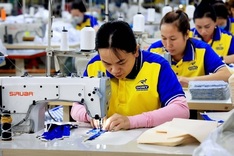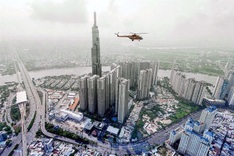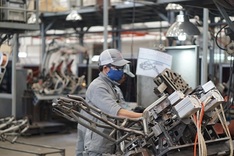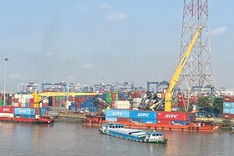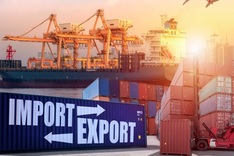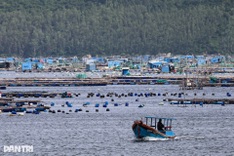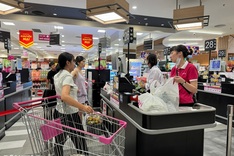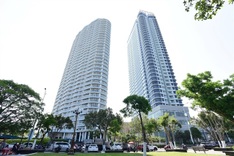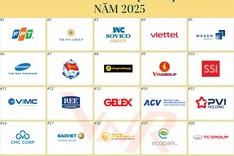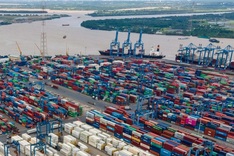Vietnam will account for 1.57% of Asia Pacific regional oil demand by 2014, while providing 4.24% of supply, according to forecasts in the latest Vietnam Oil & Gas Report by research firm BMI.
 Regional oil use of 21.40mn barrels per day (b/d) in 2001 reached an estimated 25.63mn b/d in 2009. It should average 26.13mn b/d in 2010, then rise to around 29.23mn b/d by 2014, said the report. Regional oil production was just under 8.41mn b/d in 2001, and averaged an estimated 8.46mn b/d in 2009. It is set to increase to 8.77mn b/d by 2014. Oil imports are growing rapidly, because demand growth is outstripping the pace of supply expansion. In 2001 the region was importing an average of 12.99mn b/d. This total had risen to an estimated 17.17mn b/d in 2009, and is forecast to reach 20.46mn b/d by 2014. The principal importers will be China, Japan, India and South Korea. By 2014 the only net exporter will be Malaysia.
Regional oil use of 21.40mn barrels per day (b/d) in 2001 reached an estimated 25.63mn b/d in 2009. It should average 26.13mn b/d in 2010, then rise to around 29.23mn b/d by 2014, said the report. Regional oil production was just under 8.41mn b/d in 2001, and averaged an estimated 8.46mn b/d in 2009. It is set to increase to 8.77mn b/d by 2014. Oil imports are growing rapidly, because demand growth is outstripping the pace of supply expansion. In 2001 the region was importing an average of 12.99mn b/d. This total had risen to an estimated 17.17mn b/d in 2009, and is forecast to reach 20.46mn b/d by 2014. The principal importers will be China, Japan, India and South Korea. By 2014 the only net exporter will be Malaysia.
In terms of natural gas, in 2009 the region consumed an estimated 466bcm and demand of 616bn cubic metres (bcm) is targeted for 2014. Production of an estimated 383bcm in 2009 should reach 542bcm in 2014, but implies net imports falling from around 83bcm to 74bcm. This is thanks to many Asian gas producers being major exporters. Vietnam's estimated share of gas consumption in 2009 was 2.36%, while its share of production is put at 2.88%. By 2014, its share of gas consumption is forecast to be 3.90%, with the country accounting for 4.43% of supply.
For 2009 as a whole, BMI has assumed an average OPEC basket price of US$60.70 per barrel (bbl), a 35.5% decline year-on-year (y-o-y). For 2010, the researchers expect to see a significant oil price recovery to US$83.00/bbl for the OPEC basket price, gaining further ground to US$85.00 in 2011 and to US$90.00/bbl in 2012 and beyond.
In 2010, the report is forecasting global premium unleaded gasoline prices at an average of US$97.00/bbl, up from US$70.22/bbl in 2009. The researchers are assuming an average global jet fuel price for 2010 of US$97.58/bbl, compared with US$70.63/bbl in 2009. For gasoil, the 2010 price estimate is for an average of US$97.40/bbl, compared with US$70.50/bbl in 2009. The 2010 naphtha price average, estimated at US$81.58/bbl compares with US$59.07/bbl in 2009.
Vietnamese real GDP growth is assumed to have been 5.1% in 2009, down from the 2008 level of 6.2%. The report is assuming 5.9% average annual growth in 2010-2014. Exploration success is on the rise in Vietnam, with a growing number of international oil companies (IOCs) teaming up with PetroVietnam and finding and developing hydrocarbon resources - particularly gas. The researchers are assuming oil and gas liquids production peaking at 400,000b/d in 2010, before easing back to 372,000b/d by 2014. Beyond 2009, consumption is forecast to increase by around 5-7% per annum to 2014, implying demand of 460,000b/d by the end of the forecast period. Gas supply and demand is forecast to increase from the estimated 2009 figure of 11bcm to 24bcm by 2014.
Between 2009 and 2019, the report is forecasting a decrease in Vietnamese oil production of 7.14%, with crude volumes peaking at 400,000b/d in 2010, before slipping to 325,000b/d by 2019. Oil consumption between 2009 and 2019 is set to increase by 78.22%, with growth beyond 2009 ranging from 5.0% to 7.0% per annum and the country using 625,000 b/d by 2019. Gas production is expected to rise from an estimated 11bcm in 2009 to 27bcm in 2019. "With identical demand growth, we see no potential for imports or exports during the period," said the report.
Vietnam has now slipped behind India in BMI's expanded and updated Upstream Business Environment Rating, with its third-place ranking reflecting a reasonable resource position, better-than-average growth outlook, attractive licensing terms and an IOC-friendly competitive environment. There is only a onepoint gap between Vietnam and India, which allows scope for the former to retake second place in future quarters. Vietnam ranks equal ninth with Pakistan in BMI's updated Downstream Business Environment Rating, reflecting its modest (but growing) refining capacity, above-average oil and gas demand growth outlook, plus a low level of retail site intensity.



